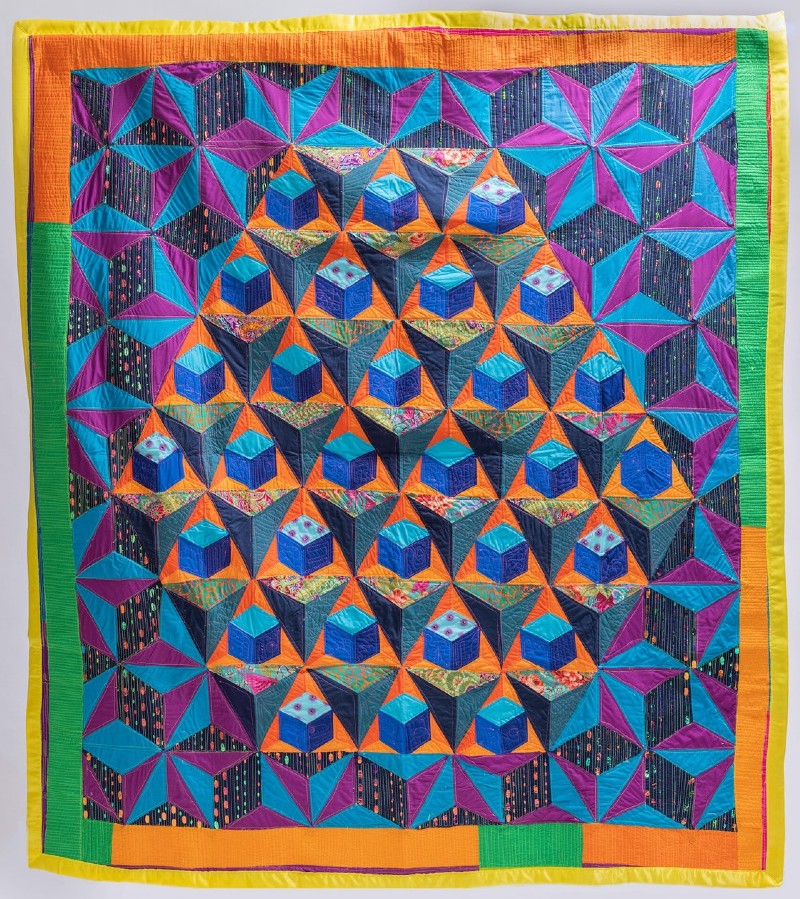Andrea Carlson's "Future Cache" exhibit at UMMA imagines decolonized landscapes for the native peoples violently removed from their land
by christopherporter

"Conversations on Mortality" at 22 North looks to transcend the silence about the dying side of living
by christopherporter

Conversations on mortality are difficult, often avoided, and in America, they are traditionally taboo. The 22 North gallery in Ypsilanti welcomes the thought-provoking exhibit Conversations on Mortality, which confronts our impermanence, the inevitability of death.
University of Michigan Museum of Art’s expansive "Watershed" exhibit flows through the political and social history of the Great Lakes region
by christopherporter

University of Michigan Museum of Art’s (UMMA) Watershed exhibition comments on the complicated relationship the Great Lakes region has with water. Despite the area's broad access to fresh water, cities like Flint have endured ongoing water crises, rivers like the Huron are impacted by contaminating spills, and the Great Lakes watersheds continue to degrade.
Systems & Shtetls: Mother Cyborg's "Crafting Our Digital Legacy" & Ruth Weisberg's "Of Memory, Time & Place" at Stamps Gallery
by christopherporter

Stamps Gallery’s two simultaneous exhibitions have little in common visually, but they do share some overarching themes.
You Are Invited: UMMA's "You Are Here" exhibit welcomes visitors back to the museum with works that help viewers experience the space
by christopherporter

In March 2020, the University of Michigan Museum of Art (UMMA) was closed to the public along with countless other businesses and organizations after the announcement of a global pandemic caused by COVID-19. During that time, we were offered virtual exhibits at UMMA; then, in June 2021, in-person exhibits resumed followed by the October 2021 reopening of the museum’s classic Jonathan and Lizzie Tisch Apse, revitalized with bright, vibrant walls and artworks that interact with visitors’ senses.
Tracey Snelling's "How to Build a Disaster Proof House" constructions contemplate displacement and disenfranchisement
by christopherporter

A vibrant installation at LSA’s Institute for the Humanities Gallery asks viewers to contemplate the utility (or lack thereof) of building a “disaster proof house.”
Tracey Snelling, the current Roman Witt Artist in Residence at the gallery, returns to LSA after previously exhibiting Here and There in 2017, which addressed “challenges of economic inequities, racial biases, and imposed class divisions that often limit the options available to so many people.” Her new exhibit, How to Build a Disaster Proof House, curated by LSA's Amanda Krugliak, “contemplates the uncertainty, displacement, and disenfranchisement that frames the present day” and asks, “How do we find a safe place, protected from bad weather and circumstance, in an era of floods, fires, violence, abuse and pandemics?”
Mary Sibande's "Sophie/Elsie" sculpture anchors UMMA's African art gallery
by christopherporter

Sophie/Elsie is a striking sculptural figure, vibrant and visible from a distance, a colorful, bright beacon in the newly expanded and reopened African galleries at the University of Michigan Museum of Art.
Stamps Gallery's "Envision: The Michigan Artist Initiative" celebrates creators who are inspiring the next generation
by christopherporter
Based on my direction of approach to the University of Michigan's Stamps Gallery, I didn’t see Michael Dixon’s large-scale sculptural alligator head with one sharp, gold tooth before entering—though it's visible in the gallery’s large front windows.
At Odds: "Oh, Honey ... A Queer Reading of UMMA's Collection" imagines a place where LGBTQ+ art can thrive
by christopherporter

Art is often intentionally ambiguous, asking viewers to create meaning and metaphorically fill in the blanks with their interpretations.
Highlighting History: "Harold Neal and Detroit African American Artists: 1945 through the Black Arts Movement"
by christopherporter

Though Detroit is synonymous with musical innovation, the Michigan cultural center is not frequently framed as an epicenter of fine art. In a new exhibit, curators suggest that this is not because Detroit lacks—now or in the past—a vibrant art scene but because of historical oversight on the parts of art historians.
